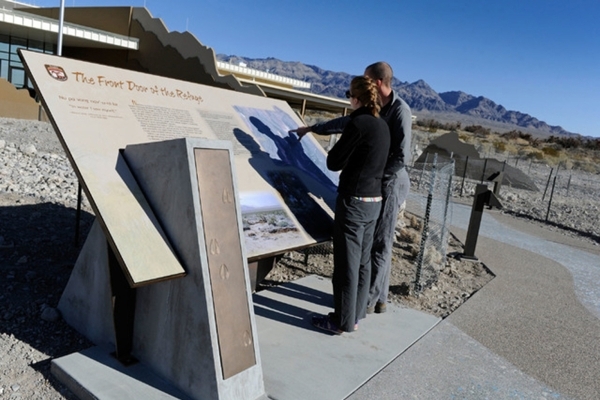Nearby wildlife refuge remains largely unknown

Despite its proximity to Las Vegas, the Desert National Wildlife Refuge remains unknown to many Southern Nevadans. Set aside as a refuge for desert bighorn sheep in 1936, the enormous parcel north of the city encompasses six mountain ranges and neighboring valleys in Clark and Lincoln counties. It lies between U.S. Highway 95 on the west and U.S. 93 on the east and extends north almost to the Pahranagat Lakes near Alamo. It ranges from 2,000 feet to 10,000 feet elevation through seven life zones. At 1.6 million acres, it is the largest refuge managed by the U.S. Fish & Wildlife Service in the lower 48 states.
Although the western half of the refuge is closed to the public as an Air Force testing and training range, the other half is open to public use for activities compatible with wildlife protection and habitat conservation. Visitors enjoy picnicking, camping, hiking, backpacking, horseback riding, birding, wildlife watching, photography and exploration using existing roads and trails. Refuge protection supports 600 to 800 bighorn sheep, as well as benefiting surprising numbers of mammals, birds, reptiles, amphibians, small desert fish and at least 500 species of plants, some very rare. Even fossils and cultural remnants are protected by the federal refuge.
A few restrictions and rules apply. Vehicles used on the refuge must be street legal and must stay on existing roadways. Off-road vehicles are prohibited. Firearms are not restricted, except inside the visitor center, but they cannot be discharged except in season by licensed hunters with Nevada bighorn tags. Other hunting weapons, as well as fireworks and explosives, are prohibited.
To reach the Desert National Wildlife Refuge, drive north on U.S. 95 about 20 miles to mile marker 101 between the turnoffs to Kyle Canyon and Lee Canyon. Turn right on Corn Creek Road, the major access to the refuge. The 4-mile road to visitor facilities at Corn Creek was recently improved and paved. The historic ranch site with pastures and remnant orchards serves as field headquarters for the refuge. Corn Creek has staff housing and maintenance sheds adjacent to springs, streams, ponds and wetlands that have attracted humans and wildlife to the site since ancient times. There is no entrance fee for the refuge or for camping in the six-site primitive campground located in the mountains.
The refuge visitor center is open just four days a week, from 8 a.m. to 4:30 p.m. Thursdays through Sundays.
The handsome visitor center, which opened in 2013, replaces a series of information posts that provided a cursory introduction to the refuge for decades. The award-winning structure is a showpiece for green building features. Imaginative design includes attractive use of color and materials for indoor and outside decor, incorporating native stone in walkways and exterior landscaping using native desert plants, including bright late-season flowering plants still in bloom.
Displays inside usher visitors into the past. They explain what makes the oasis at Corn Creek important in area history. They follow the trail of native people from the end of the last ice age to the arrival of nonnative settlers. They came as hunter-gatherers for the water and the plants and animals it attracted. The site became home to a parade of cultural groups, including the Nuwuvi, who supplemented their use of native edibles by growing several crops in small irrigated patches at Corn Creek. Later, pioneer ranchers acquired Corn Creek to raise livestock, hay, vegetables and fruits starting in the late 1800s. Not originally part of the refuge, but essential to it, Corn Creek became refuge property when it was purchased in 1939.
— Margo Bartlett Pesek’s Trip of the Week column appears on Sundays.